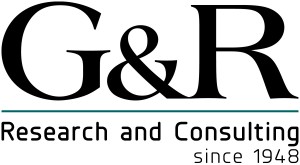
“Man Controlling Trade,” one of two similar sculptures outside of the Federal Trade Commission building in Washington, DC
Claims Substantiation studies are a specialized type of marketing research, aimed at proving or disproving claims made in advertising. Claim research designs can vary significantly based on the type of claims to be made, and on the product category. However, as more claims cases are adjudicated, more principals for what is considered appropriate research support have emerged.
Here’s a primer based on five questions we have used when framing claims substantiation research projects, particularly within our area of specialty: consumer perception studies.
The Five Ws
1. Why is it needed?
Federal law requires that advertising be both truthful and not misleading. This standard is the same no matter where an ad appears – TV, online, radio, newspapers, magazines, billboards or point of purchase. The Federal Trade Commission (FTC) enforces the truth-in-advertising laws, but other Federal (like the Food and Drug Administration – FDA) and State agencies can become involved. Claims can also be challenged in Federal and State courts and in front voluntary dispute resolution services of self-regulatory associations, like the National Advertising Division (NAD) of the Better Business Bureau.
Most challenged cases are resolved at the voluntary dispute level. However, settlement costs alone, which don’t include attorney fees, corrective marketing expenses and brand reputation damage, of egregious false advertising can be substantial.
Selected Large False Advertising Settlements
| Year | Company | Amount |
|---|---|---|
| 2017 | Uber | $20 million |
| 2016 | VW | $10+ billion |
| 2015 | Lifelock | $100 million |
| 2014 | Red Bull | $13 million |
| 2013 | Kellogg | $4 million |
| 2012 | New Balance | $2.3 million |
| 2011 | Kellogg | $2.5-5 million |
| 2010 | Dannon | $45 million |
2. When is it Done?
Not all claims need to be substantiated. The line between puffery, which does not require substantiation, and non-puffery, which does, turns on whether the claim is seen as fact, and therefore needing support, or as opinion, and therefore not needing support. Additionally, the context in which the claim appears can cause a statement that by itself would be considered puffery to become one that requires substantiation, such as when the claim is shown against the backdrop of a competitive brand.
Importantly, too, if substantiation is needed, it should be conducted before the claim is propagated. Demonstrating the validity of a claim after the claim has been made is treated the same as if the claim was unsupported, except if the case goes to court, the lack of prior support alone is not enough to make a claim of consumer fraud.
3. What must it Prove?
Advertisers must have “competent and reliable scientific evidence” to support their claims. The kind of evidence that is needed turns on whether the claim is “sensory” and supportable with consumer-perception evidence or whether the claim is “performance,” requiring objective testing as support. For example, “looks cleaner” is an example of the former and “cleans better” is an example of the latter. The go-to research method in claims research is the randomized control trial (RCT). Other designs may be accepted, and even preferred, depending on the type of claim being made, but qualitative research is not acceptable for claims research. All reasonable interpretations of the claim must be supported, including messages the advertiser may not have intended to convey.
4. Who is the Sample?
The claim must be substantiated among a sample that is representative of the population among whom the claim Is based. That includes appropriate demographic range and geographic coverage. Most likely, the sample should be of product category users or people who would consider using the product, rather than of product purchasers or audiences based on target marketing definitions. There is not set size for the sample, but it must be of sufficient size and robustness to establish near statistical certainly, generally at the 95% confidence level.
5. Where is it Conducted?
The more objective the claim is, the more likely it should follow industry standards and be conducted in a lab-like environment. The more subjective the claim is, the more likely it is that consumer perception studies should be used. In consumer perception studies, the need is to match the conditions under which customers encounter the product in the marketplace while balancing for experimental control. Central location interviewing is usually preferred because it provides better control over product presentation and survey execution. Home Use Testing is better when the product cannot realistically be considered in a central location environment or when it must be experienced in normal/multiple usage exposure.
Summary
The purpose of Claims Substantiation Research is to provide an advertiser with a “reasonable basis” for the claim that it is making. While there is no bright-line rule for what is reasonable – different decision venues can exercise leeway in how much weight to give the substantiating research – research that adheres to the principals of good consumer testing practice is more like to sway an arbiter in one’s favor if a claim is challenged.
Learn More about G&R’s Claims Substantiation Research Solutions

Comments are closed.